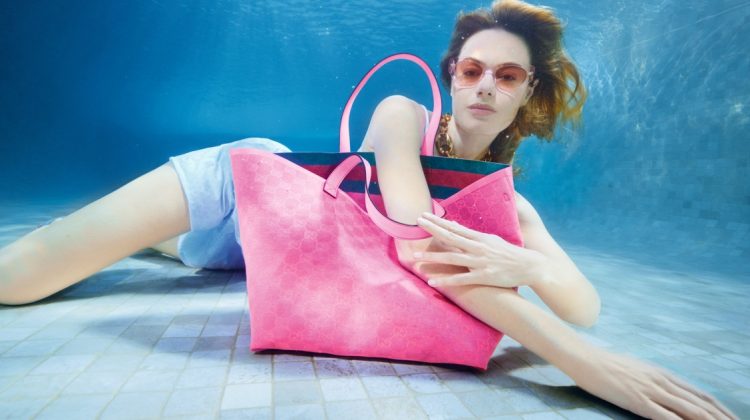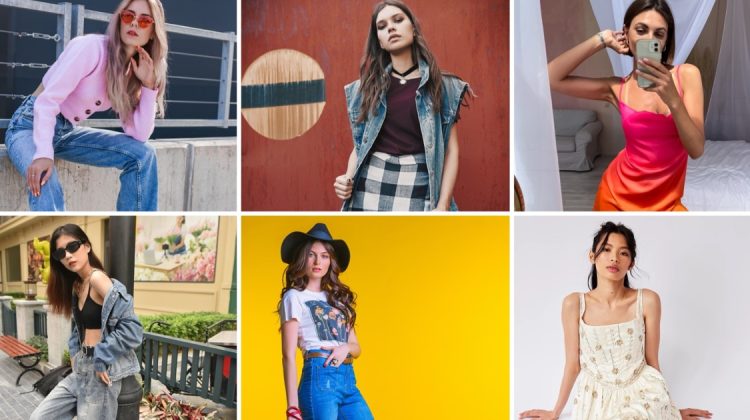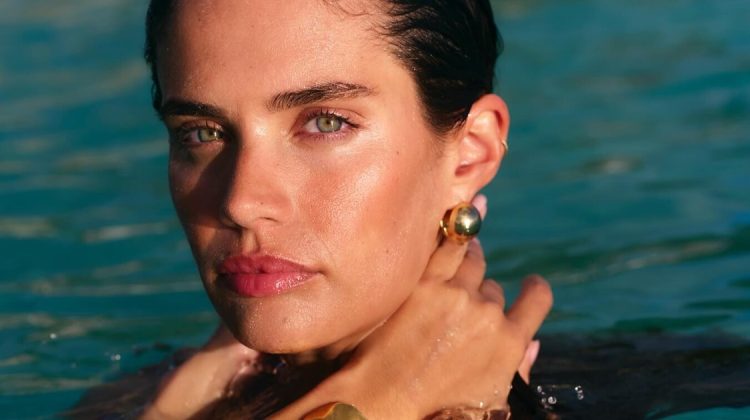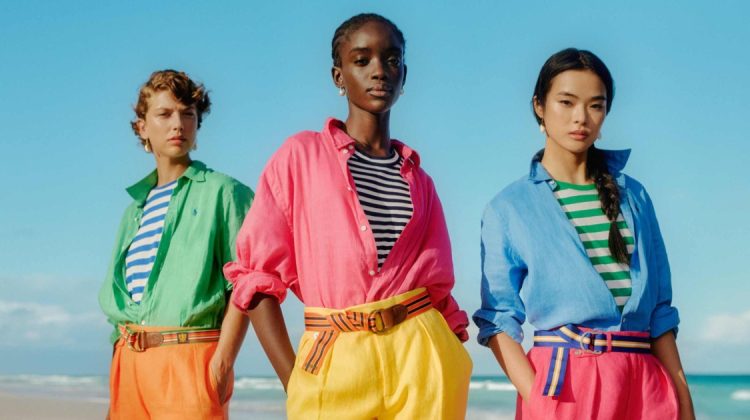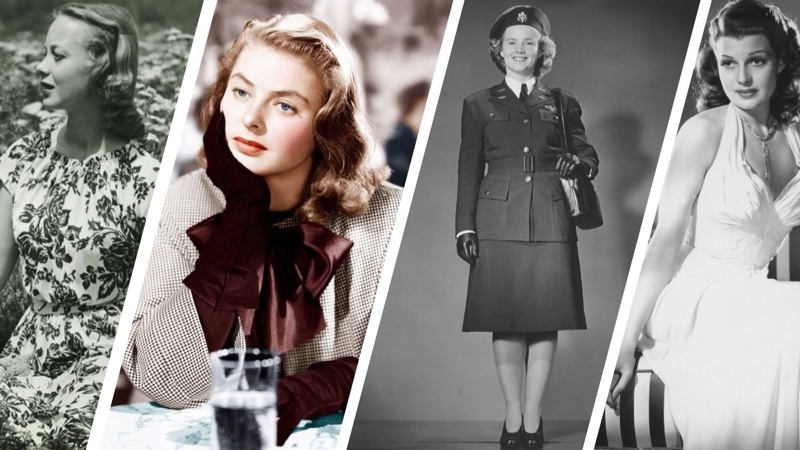
The 1940s fashion era holds a significant place in the history of women’s fashion. This influential period was marked by wartime influences, evolving silhouettes, and the emergence of iconic designers. Read on as we delve into the world of 1940s fashion, uncovering its impact and enduring legacy.
To further explore the realm of vintage fashion, be sure to check out our guides on 1930s and 1950s fashion. The 20th century saw dramatic design changes that still influence today.
1940s Fashion: The Impact of World War II
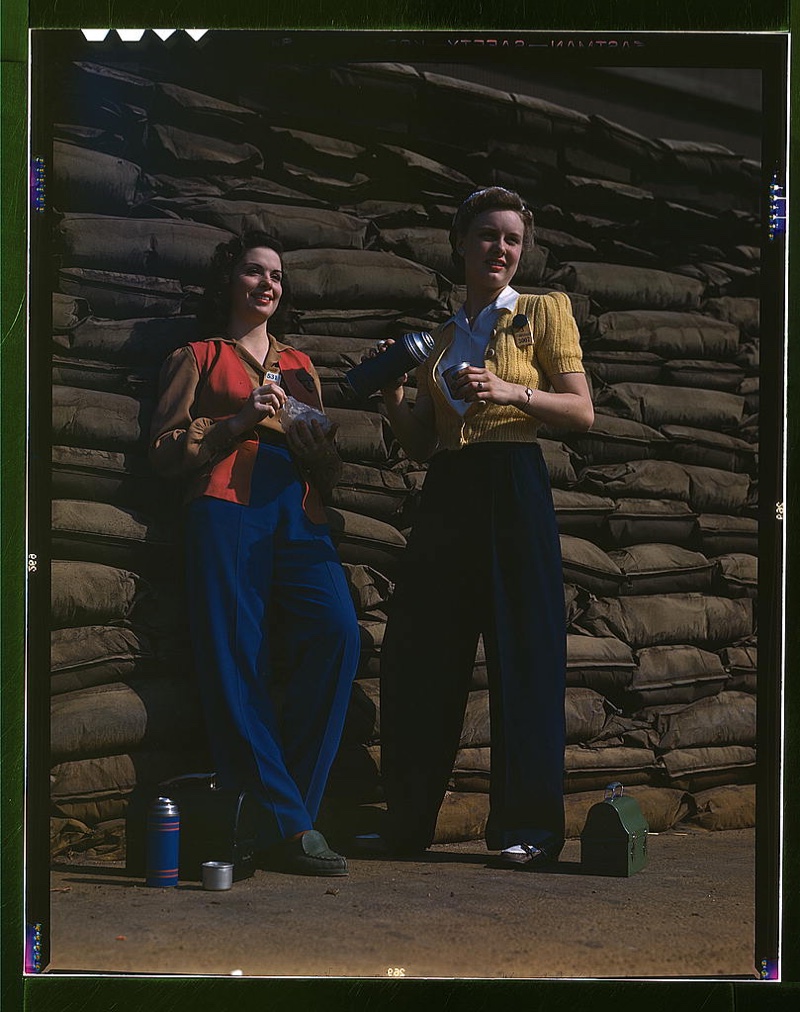
Women’s fashion during the Second World War was deeply intertwined with the war effort itself. As men went off to fight, women stepped into the workforce and took on new responsibilities. This shift in societal roles brought about a significant change in fashion. Practicality became paramount as women needed clothing that suited their newfound roles while maintaining style.
Utility clothing emerged as a response to the practical needs of women during the war. Functionality and durability were prioritized, with designs incorporating pockets, adjustable features, and simplified construction. Utility garments were made from sturdy fabrics such as rayon, wool, and cotton, and they offered versatility that allowed women to adapt their outfits to different occasions.
Government restrictions had a profound influence on clothing styles during the war. Rationing and fabric limitations meant that women had to make do with fewer resources. Hemlines were shortened, and garments became more streamlined to conserve materials. Luxurious details and embellishments were replaced with simplicity and understated elegance.
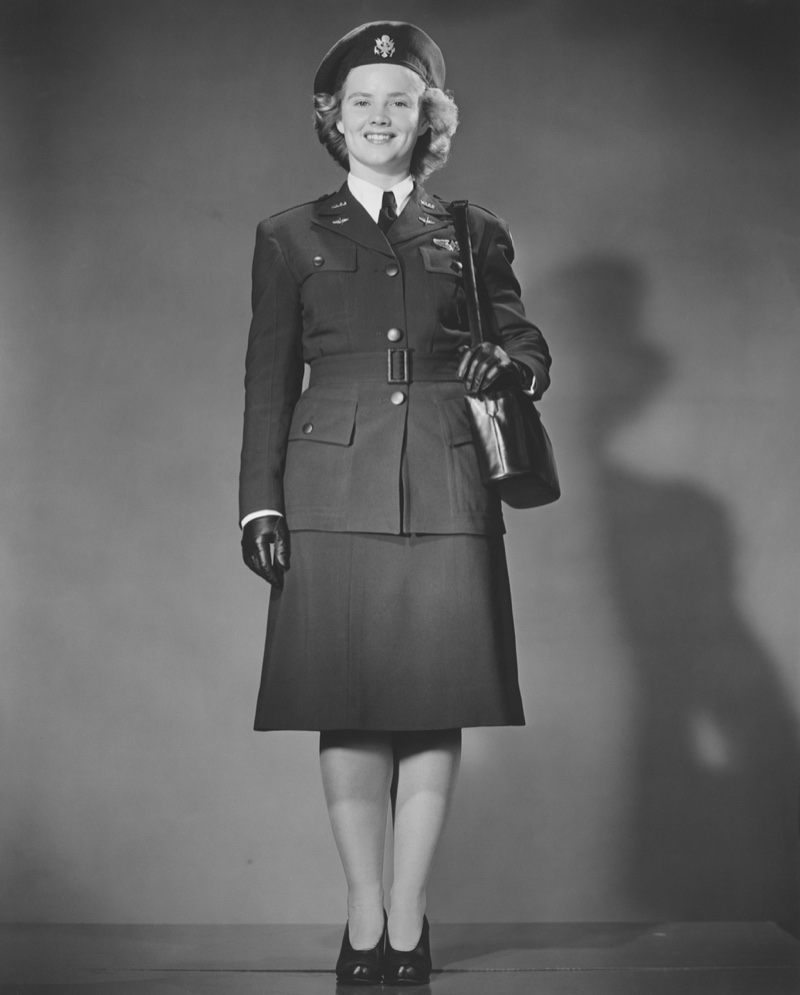
Fashion houses played a crucial role in adapting to wartime needs. They shifted their production focus to support the war effort by manufacturing military uniforms, parachutes, and other essential items.
At the same time, they worked on creating designs that embraced utility while maintaining a sense of fashion-forwardness. This adaptation showcased the resilience and versatility of the fashion industry.
The emergence of military-inspired fashion made a lasting impact on the style of the era. The uniforms worn by servicemen influenced women’s clothing, leading to the rise of practical elements such as epaulets, brass buttons, and tailored silhouettes.
Women embraced the strength and functionality of military attire, incorporating these details into their own wardrobes. Military-inspired fashion became a symbol of empowerment and patriotism, even in regard to 1940s hairstyles.
Early 40s
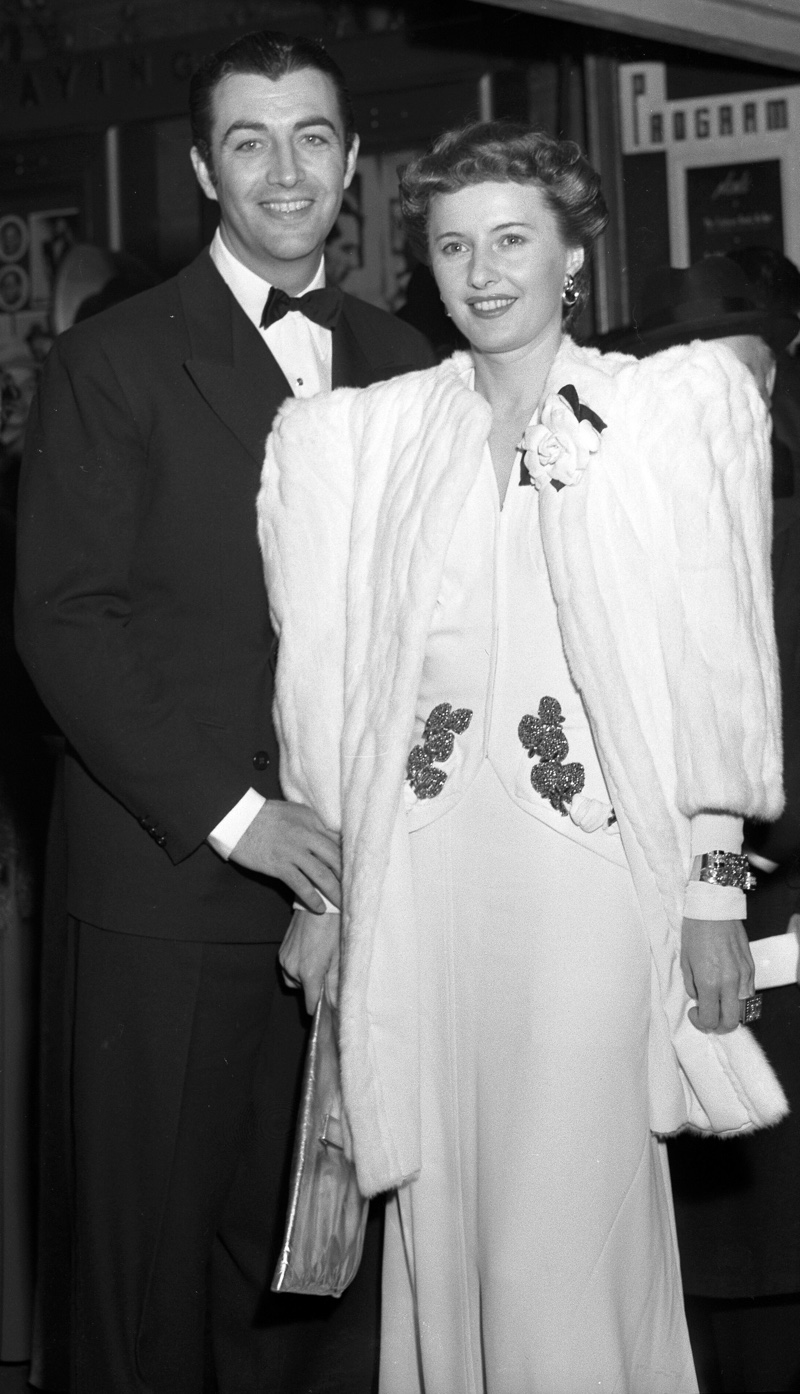
In the early 1940s, women’s fashion silhouettes underwent a transformation influenced by World War II. This era saw practicality taking center stage due to fabric rationing and the need for functionality. The fashion of the time embraced a restrained and utilitarian aesthetic.
The shoulders became broader, borrowing inspiration from military uniforms to evoke a sense of strength and empowerment. At the same time, the waist was accentuated, creating an hourglass figure using belts, jackets, and dresses with peplum details.
Skirts varied, with A-line skirts being popular for everyday wear. Hemlines typically fell around the knee, allowing for ease of movement. Suits and separates gained popularity as matching pieces allowed for versatility.
The emphasis on utility and practicality resulted in clothing designs featuring functional details such as large pockets and durable fabrics like wool and cotton.
Late 40s
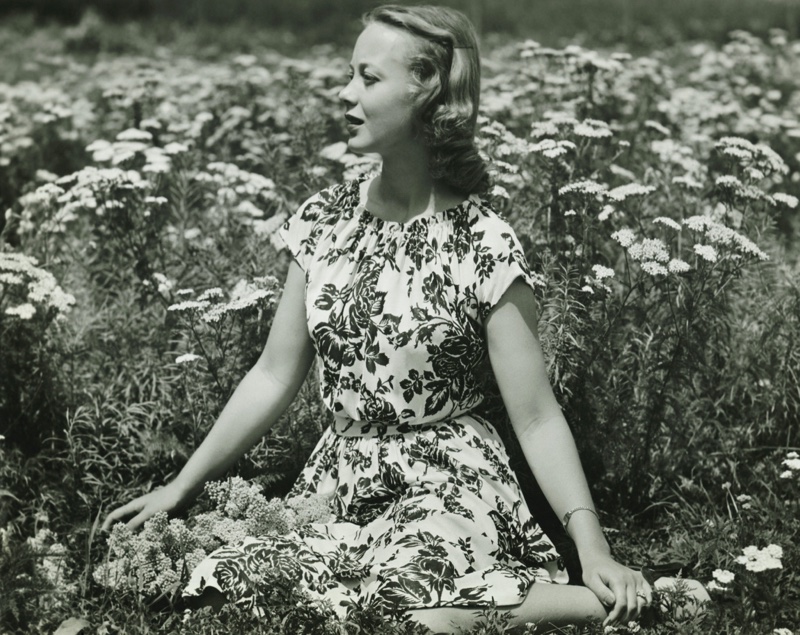
The late 1940s also witnessed a change in fashion, primarily characterized by a new silhouette and shape that redefined femininity. At the forefront of this sartorial revolution was Christian Dior and his groundbreaking “New Look” during the later part of the decade.
Dior’s revolutionary designs, introduced in 1947, challenged the austerity of wartime fashion and brought forth a sense of renewed elegance and opulence.
The hallmark of the “New Look” was the emphasis on a nipped-in waist and fuller skirts. Dior’s designs celebrated the hourglass figure, with cinched waists accentuating feminine curves.
The skirts flared out, showcasing a sense of movement and grace. This departure from the straight and boxy shapes of the previous decade marked a return to the romantic and glamorous aesthetics of pre-war fashion.
Additionally, the 1940s saw the popularity of shoulder pads and wide shoulders. These exaggerated shoulder lines created a powerful and assertive look, echoing the strong and confident spirit of the era.
Shoulder pads became a key feature in women’s suits, dresses, and coats, adding structure and stature to the overall silhouette. The broadened shoulders symbolized resilience and strength, reflecting women’s collective determination during adversity.
Style Icons
Katharine Hepburn
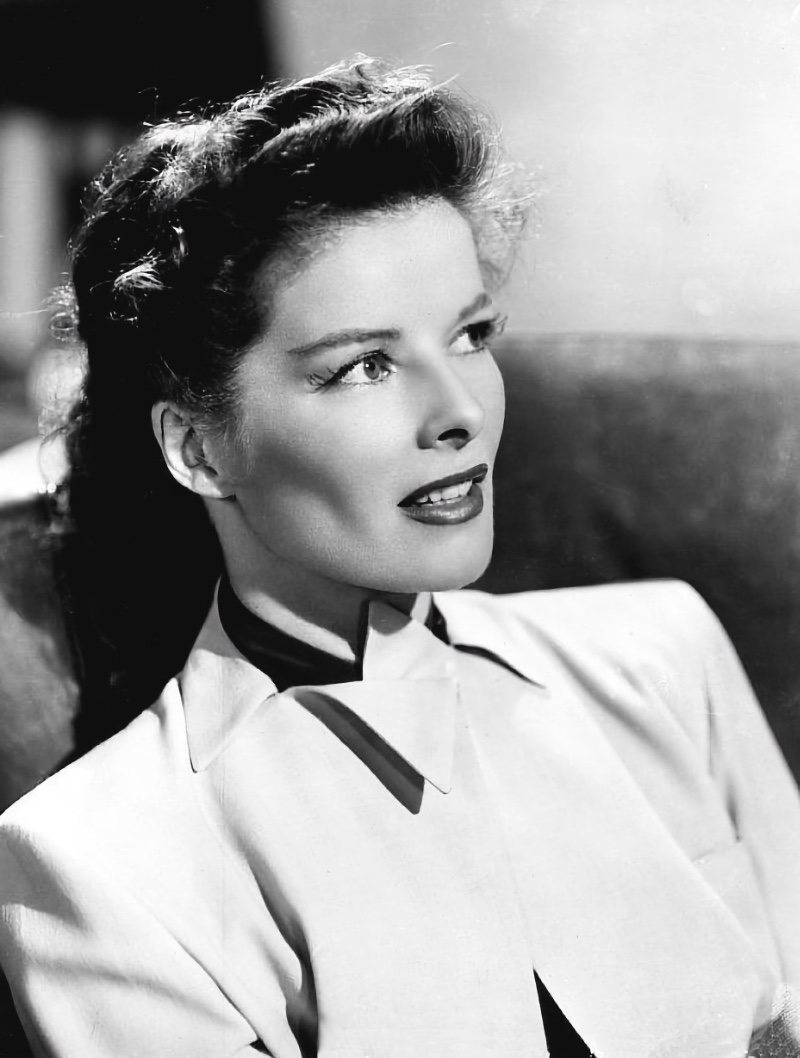
Katharine Hepburn’s style in the 1940s was a testament to her individuality and confident fashion choices. While many Hollywood starlets of the era embraced glamorous and feminine looks, Hepburn stood out with her unconventional attire.
She effortlessly combined elements of menswear with a touch of femininity, creating a style that was both avant-garde and timeless.
In the 1940s, Hepburn frequently donned wide-leg trousers and high-waisted pants, challenging the traditional norms of women’s fashion. Paired with crisp button-up shirts and tailored blazers, her outfits exuded effortless elegance.
Despite her preference for menswear-inspired ensembles, Hepburn didn’t wholly forsake femininity. She incorporated skirts, dresses, and blouses with feminine details like ruffles or floral patterns into her wardrobe.
Rita Hayworth
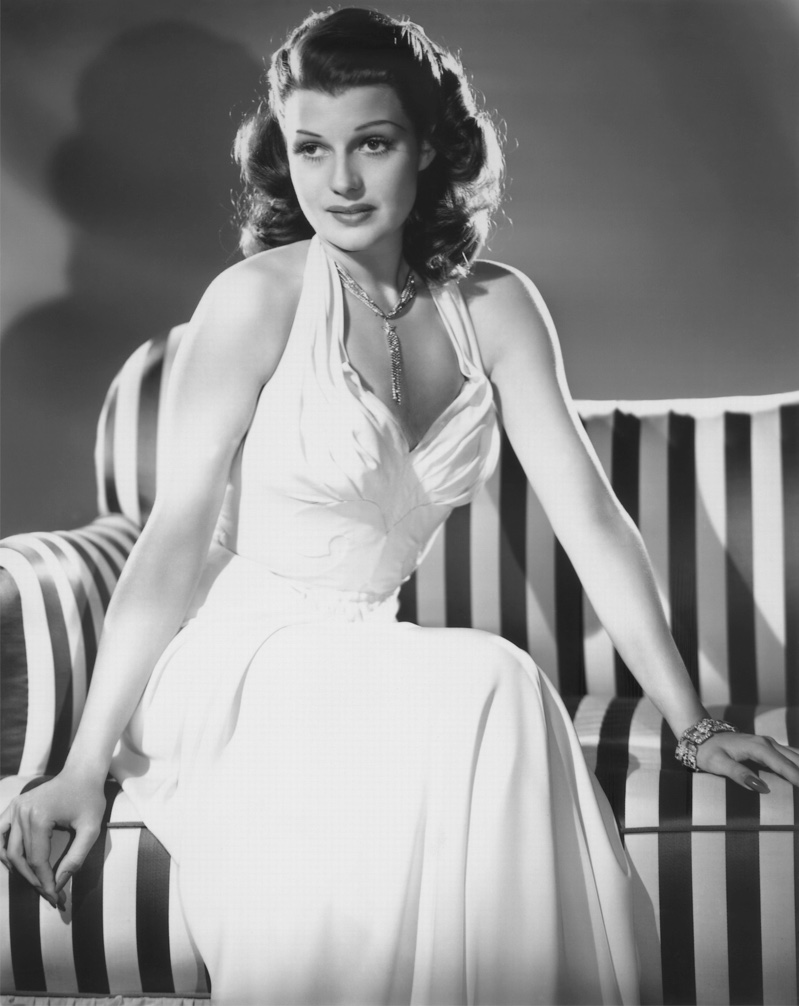
Rita Hayworth, the epitome of timeless allure, captivated audiences not only with her mesmerizing performances but also with her impeccable style in the 1940s. With her luscious red locks, Hayworth’s fashion choices exuded a distinct blend of sophistication and glamour.
During this era, Hayworth embraced a seductive aesthetic. She frequently graced the silver screen in form-fitting gowns that accentuated her hourglass figure, leaving audiences in awe. With strategic draping, plunging necklines, and exquisite fabrics, she effortlessly exuded confidence.
Ingrid Bergman
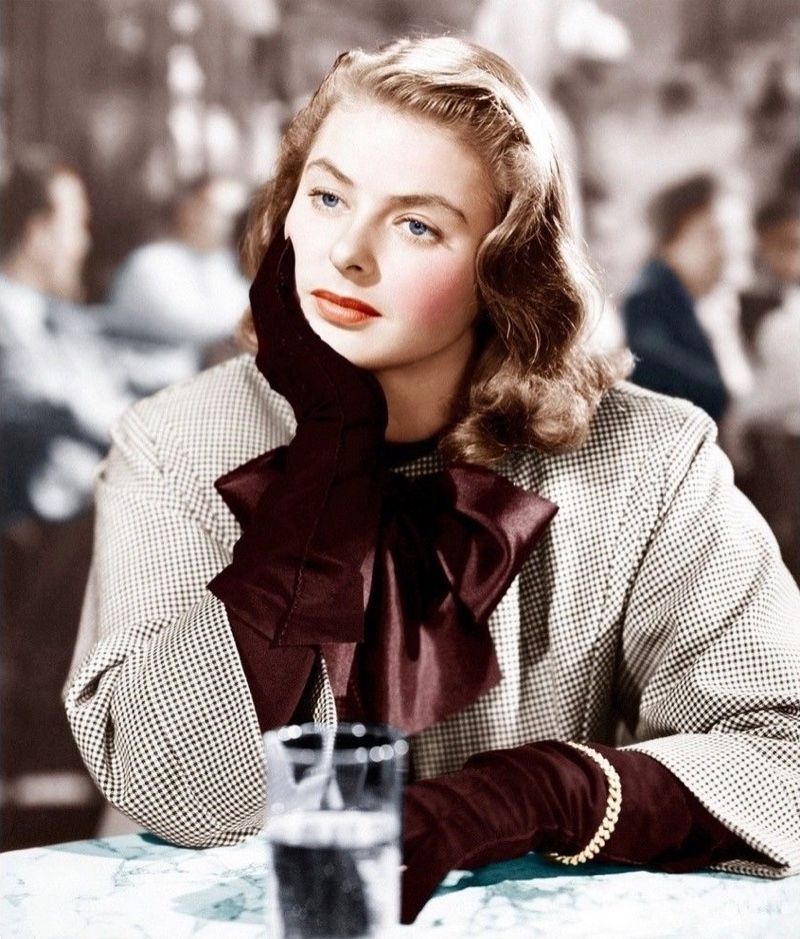
Ingrid Bergman’s style in the 1940s radiated a captivating blend of timeless elegance and effortless grace. As one of Hollywood’s most beloved leading ladies, Bergman captured the hearts of audiences not only with her talent but also with her impeccable fashion choices.
During this era, Bergman embraced a sophisticated and refined aesthetic. She often favored tailored silhouettes, with figure-flattering dresses that accentuated her natural beauty. Bergman’s ensembles featured clean lines, cinched waists, and modest necklines, reflecting the prevailing fashion trends of the time.
Bergman’s outfits were often accompanied by tasteful accessories, such as delicate jewelry and elegant hats, which added a touch of polish to her overall look.
Claire McCardell
A notable designer of the time was Claire McCardell, who significantly contributed to casual styles, known for helping to shape sportswear. McCardell’s designs reflected the changing times and the need for practical, versatile clothing.
She championed the use of natural fabrics and introduced concepts like mix-and-match separates and functional details such as pockets and belts. McCardell’s designs resonated with the modern woman seeking stylish and effortless ensembles for everyday wear.
Clothing Styles & Trends
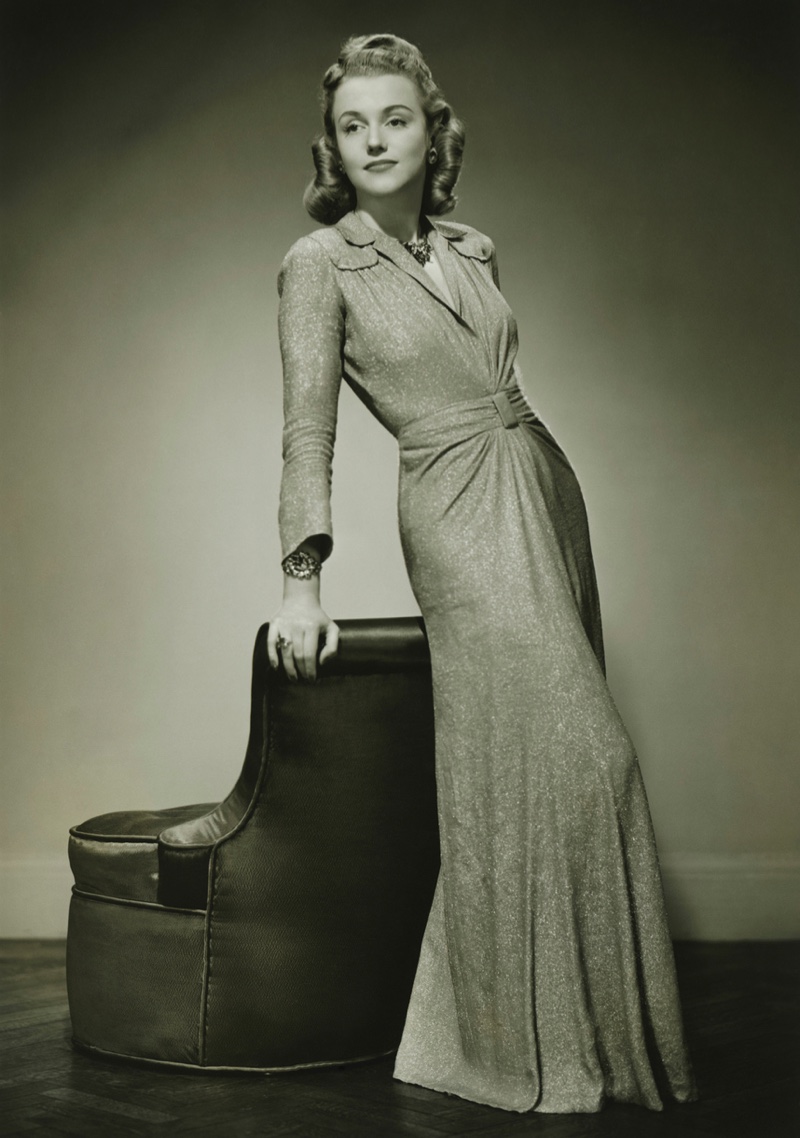
The 1940s witnessed a shift in women’s fashion, marked by the prominence of tailored clothing and the rise of women’s suits. This era saw a departure from the frivolity of previous decades as women embraced a more sophisticated and empowered style.
Suits became a symbol of empowerment and professionalism, with women adopting tailored jackets and high-waisted trousers that exuded confidence and refinement in contrast to men’s zoot suits. The tailored fashion trend allowed women to break free from traditional gender roles and make a statement in the workplace.
Skirt suits also gained popularity during the 1940s, offering a versatile and elegant alternative to traditional dresses. Combining a tailored jacket and a matching or coordinating skirt created a polished, feminine silhouette. Skirt suits became a go-to choice for many women, providing a balance between professionalism and femininity.
The glamour of the 1940s was unparalleled when it came to evening wear. Women embraced opulent gowns adorned with intricate details and luxurious fabrics.
Materials & Accessories

The materials and accessories of the 1940s played a significant role in shaping the era’s fashion. With limited resources due to the war, fashion designers had to adapt by utilizing less fabric and incorporating utility fabrics. Practicality became paramount, and garments were often designed to maximize functionality while maintaining style.
Regarding footwear, high heels, and leather shoes became prominent choices for women. High heels added height and elegance to outfits, while leather shoes provided durability and a sophisticated touch. These accessories were essential in completing a polished and put-together look.
Silk stockings were highly valued during the 1940s, but their scarcity during the war created a challenge for women. With the focus on the war effort, silk was redirected for military purposes, making stockings a rare and coveted commodity. Women often resorted to alternatives such as nylon stockings, which gained popularity during this time.
Post-war Fashion & the Influence of the American Scene
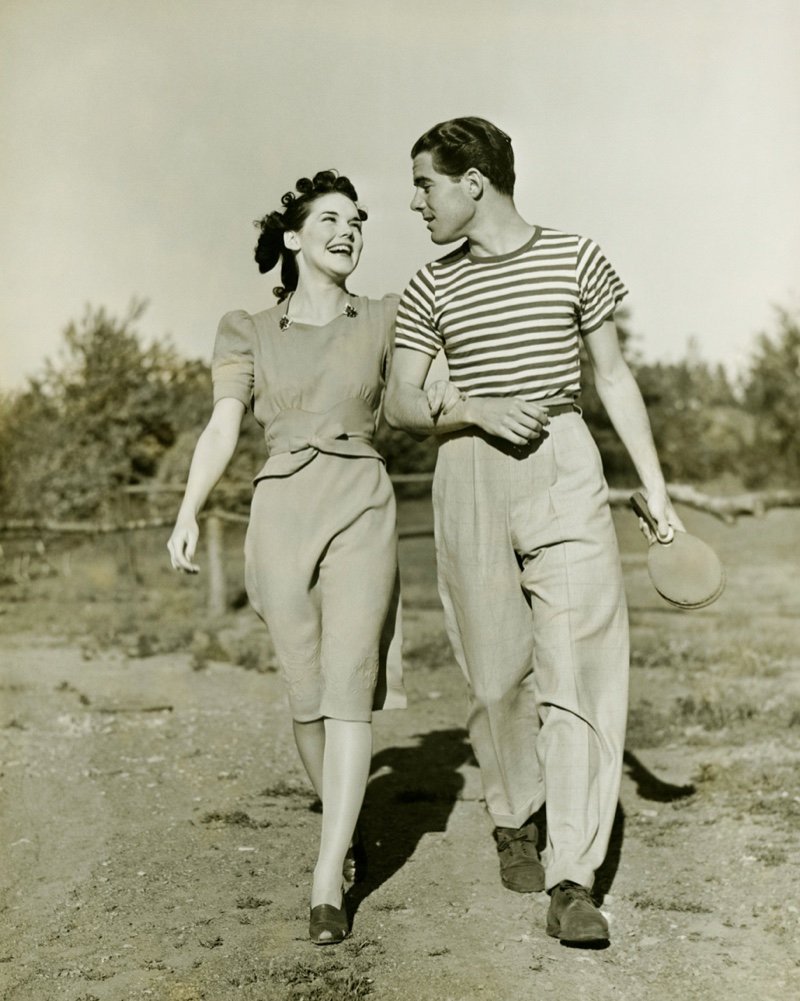
The post-war era marked a significant turning point in fashion, as American designers brought fresh perspectives and reinvigorated the industry with their innovative creations. These designers infused the fashion landscape with new energy, introducing unique ideas and pushing the boundaries of traditional aesthetics.
One iconic style that emerged during this time was the pencil skirt. This sleek and form-fitting garment became synonymous with 1940s fashion, emphasizing the feminine figure while embracing a more streamlined silhouette. The pencil skirt exuded elegance and sophistication, capturing the spirit of the era and becoming a staple in women’s wardrobes.
In a departure from the austerity of wartime, bright colors took center stage in fashion. The post-war period was marked by a sense of optimism and a desire to embrace joy and vibrancy.
This shift in mood was reflected in clothing choices, with bold and vivid colors becoming popular. From vibrant reds to electric blues, these eye-catching hues brought life and energy to outfits, signaling a newfound freedom and sense of celebration.
Makeup & Hair
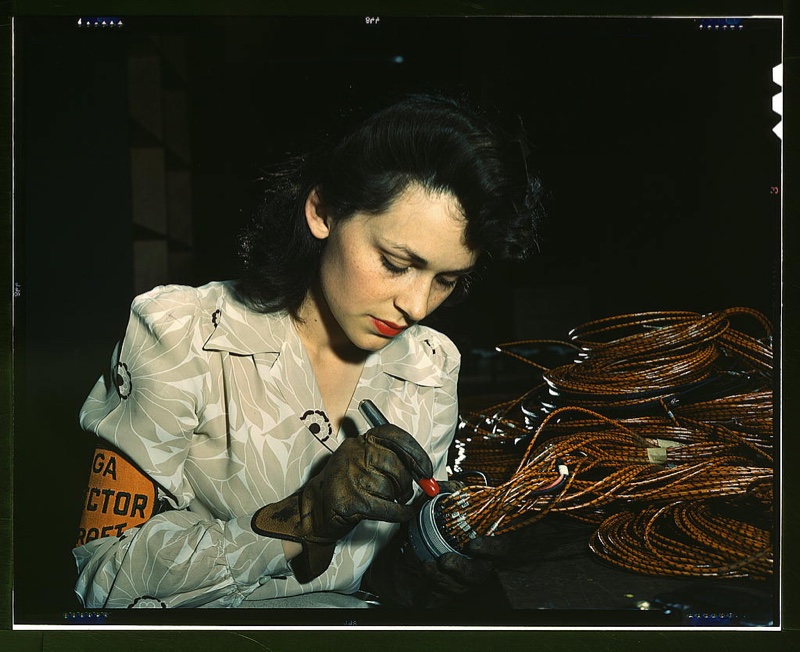
The prevailing trends and societal changes of the time also influenced makeup and hair in the 1940s. Women embraced a polished and refined look, emphasizing classic beauty and sophistication.
In terms of makeup, a signature feature was the bold red lipstick, which became a symbol of femininity and glamour. Women carefully applied this vibrant shade to their lips, creating a striking contrast against their complexion.
Eyes were accentuated with defined brows and subtly smoky eyeshadow, while mascara added length and volume to the lashes. A touch of blush on the cheeks added a natural flush of color.
As for hairstyles, women often opted for elegant updos, such as victory rolls or chignons, which exuded a sense of timeless elegance. These hairstyles were meticulously styled and often adorned with accessories like decorative pins or headbands.
Children’s Clothing
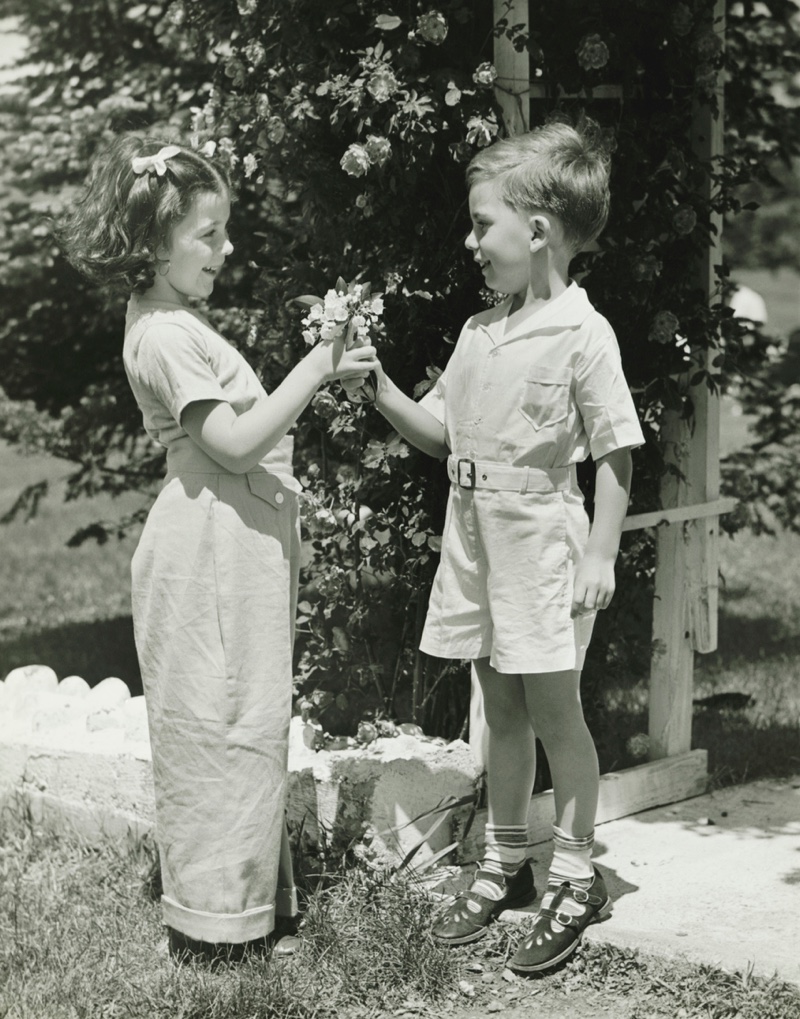
In the 1940s, children’s fashion took on a practical and resilient tone, responding to the effects of World War II and rationing measures. Clothing for the little ones was aimed at durability and functionality rather than flashy trends.
Boys and girls embraced separates, consisting of mix-and-match tops and bottoms. Girls sported blouses or shirts alongside skirts or pinafores, while boys rocked shirts with shorts or trousers.
Dresses, popular for girls, showcased simple fabrics with modest cuts and lengths, often featuring charming touches like ruffles, collars, and pleats.
Overalls and rompers became go-to options for both genders, offering practicality and freedom of movement during playtime. Crafted from sturdy materials such as denim or cotton, these garments held up to the rigors of youthful adventures.
Warmth was provided by cozy knitwear, including sweaters and cardigans. Boys and girls alike donned these knitted pieces, often adorned with delightful patterns or motifs.
Accessories for children were typically understated. Girls adorned their hairstyles with hair bows, ribbons, or headbands, while boys sported fashionable flat caps or newsboy caps.
During this era, wartime rationing limited fabric availability, prompting many families to rely on hand-me-downs or clothing crafted from repurposed materials. Practicality and durability became paramount considerations in children’s fashion, harmonizing with the pragmatic realities of the time.
Influence on Fashion Today
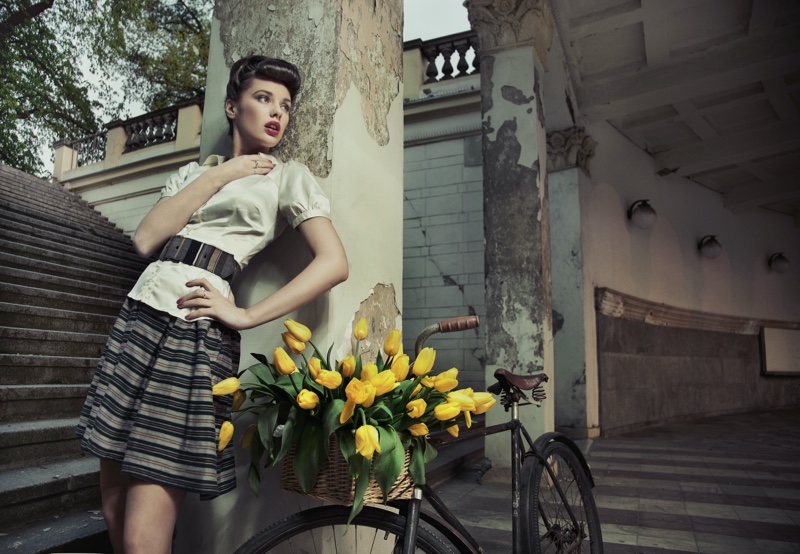
The influence of 1940s fashion continues to resonate in contemporary styles, with designers and fashion enthusiasts drawing inspiration from this iconic era. The timeless elegance and sophistication of 1940s silhouettes, such as the nipped-in waist and fuller skirts, can still be seen on runways and in everyday fashion.
The popularity of vintage clothing has soared in recent years, and the 1940s remains a cherished era for fashion enthusiasts seeking to embrace its nostalgic charm. Vintage boutiques and online platforms offer a treasure trove of authentic 1940s pieces, allowing individuals to connect with the style and spirit of the era.
Elements of 1940s fashion have seamlessly integrated into current trends. Designers often incorporate key details like shoulder pads, wide shoulders, and tailored suits into their collections, adding a touch of vintage flair to contemporary designs. From red lipstick and pencil skirts to structured handbags and high-waisted trousers, the influence of the 1940s can be seen in various aspects of today’s fashion landscape.
Final Words
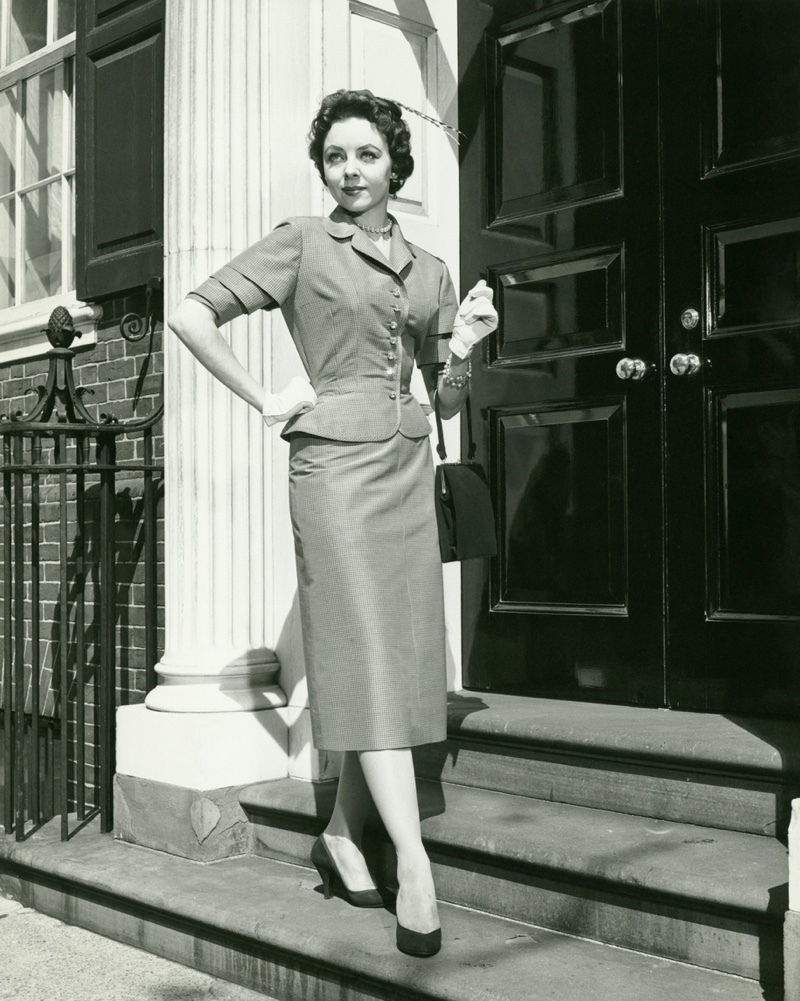
1940s fashion significantly marks women’s fashion with its wartime influences, evolving silhouettes, and the emergence of iconic designers. This influential era was shaped by the profound impact of World War II on style.
As men went off to fight, women stepped into the workforce and took on new responsibilities, leading to a significant change in fashion. Practicality became paramount as women needed clothing that suited their newfound roles while maintaining style.
Notable fashion figures like Katharine Hepburn, and Ingrid Bergman left an indelible mark on the era and continue to inspire contemporary fashion. The enduring legacy of this decade can be seen in integrating key elements into current trends, such as tailored suits, practical aspects, and more.
The enduring significance of 1940s fashion transcends time, leaving an indelible mark on the fashion world.
